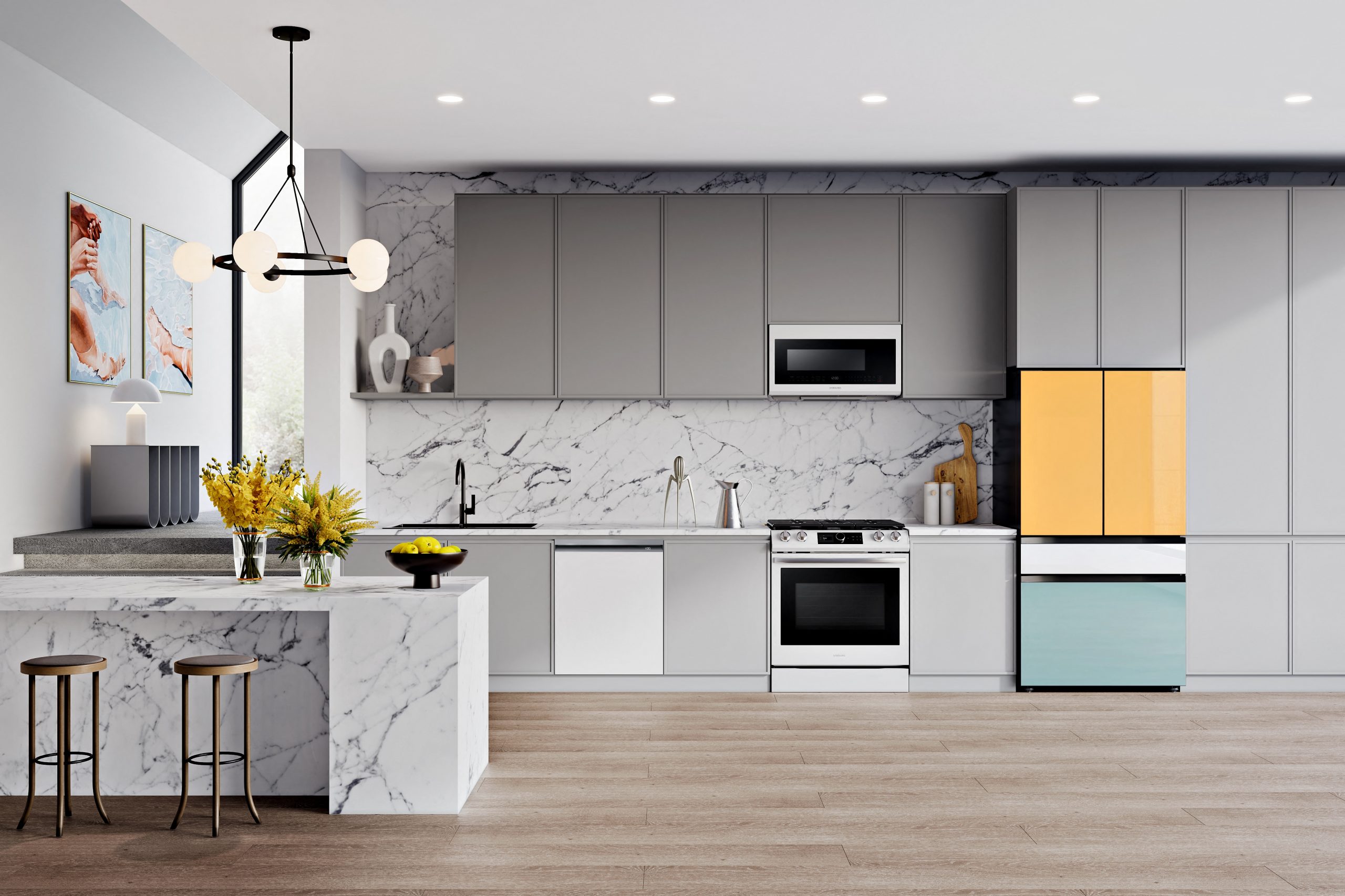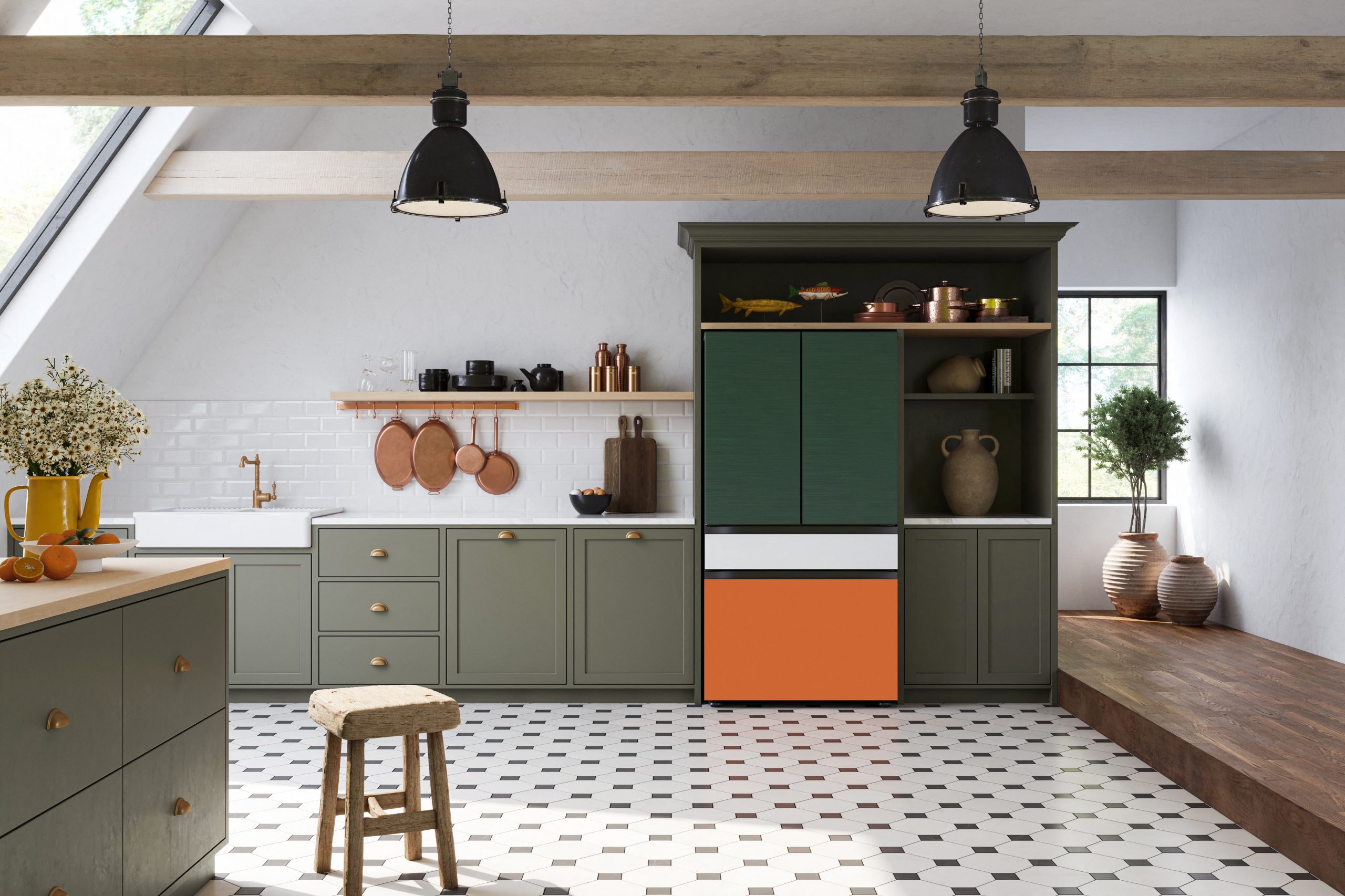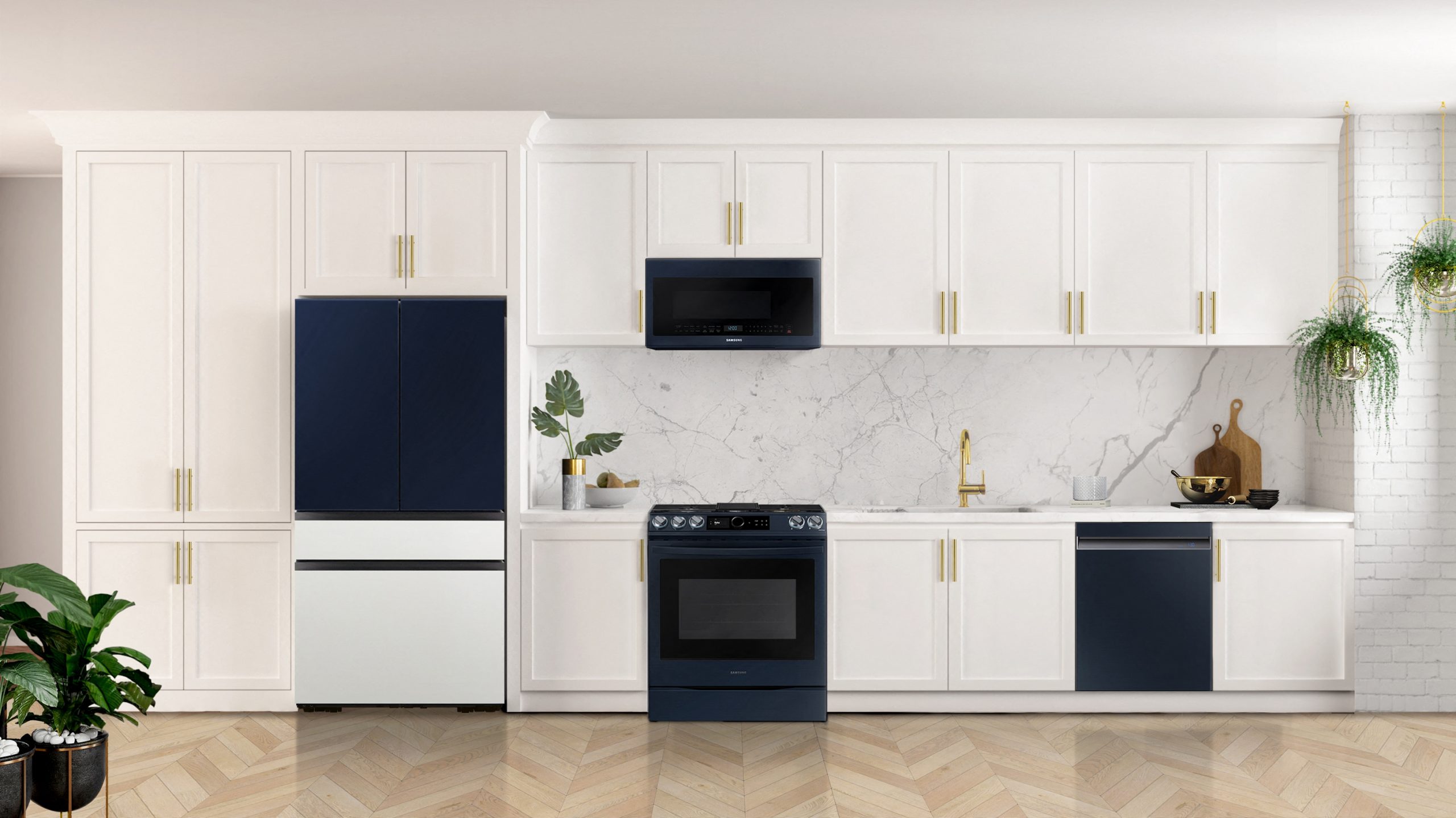Exclusive: How Samsung is rethinking appliance design with a pink fridge and morning blue stove
Morning blue and clementine are the new black -- for your next smart fridge

In the tech world, products and design are often inseparable. Think tangerine, lime, and fuchsia iMacs, think must-have Motorola Razrs, think anything by Bang & Olufsen. For these products, form only sorta followed function – it was also frivolous and fanciful. But when it comes to the appliances in our world, there’s rarely fun in their function. Most refrigerators, dishwashers, and dryers are boring rectangles, and the move to stainless steel hasn't liven up most kitchens. But why?
If form follows function, design drives desire, especially where tech is involved. And slowly but surely, it’s creeping into our kitchens like a 9-year-old after forbidden snacks. At CES 2022, Samsung expanded its Bespoke line of the most colorful array of tech-forward appliances you’ve ever seen, with a broad array of colors, finishes, and unique features to make that new range or fridge unique. The lineup includes glass and steel finishes and new colors include pink, morning blue, clementine, emerald green, and more.
That’s right, you can buy a bright orange refrigerator, and trick it out with a snappy yellow panel for even more color. It’s a rainbow revolution – and it’s driving a new type of consumer, explained Sohee Kim, the group leader of aesthetic strategy in the design team working on Samsung’s digital appliances business.
“I believe it's impossible to separate product design from tech,” Kim told TechRadar. “We're living in an age where tech must be presented in a beautiful way to win over consumers, and tech is often used as a tool to amplify beauty in a product ... I believe that our customers look for tech and design together, rather than separately.”



Changing materials, changing tacks
In the past, the material and color for a product usually came after it was designed. To refresh a product, a company could simply change its finish. But increasingly that’s turning on its ear. Fueled by the whispers of modern home renovation gurus – including Jonathan and Drew Scott of Property Brothers fame and Chip and Joanna Gaines from Fixer Upper -- consumers are demanding more unique layouts, leaning into waterfall kitchen counters, asking for the shiplap. And that’s led manufacturers to rethink some of their processes.
“More and more, when designing a product, materials are taken into consideration from the very beginning, and product designs are shifting to accommodate the desired materials. In particular, with Bespoke, we have seen consumers become more interested in finding materials and finishes that fit their space, so these aspects of product design have become more important,” Kim said.
Get daily insight, inspiration and deals in your inbox
Sign up for breaking news, reviews, opinion, top tech deals, and more.
“We're living in an age where tech must be presented in a beautiful way to win over consumers."
Sohee Kim, Samsung
But without runway shows to preview the latest designs and lookbooks in Vogue and Vanity Fair, where do the designs come from? How does Samsung decide that yellow is the new black? We put the question directly to Kim.
“Our team has been reviewing interior and color trends since 2013,” she explained. “We read annual reports about color trends, paints and varnishes, and followed influential interior design voices and furniture and appliance makers that were doing interesting things with color. Over time, we began to see things like patterns in the way materials like stone, marble, metal, or glass were being used: How the popularity of green tones were changing; how blue was being used; and how saturation levels were fluctuating on red for that year.
“With that in mind, we choose the direction and color ranges for finishes on products coming up in the next one to two years. We talk about how we want the glass finish to look, how we want to tone the different colors, then we start creating samples,” she said.
Why your stove and fridge should really talk more often
So what's the role of tech in all of this? Why is connectivity important at all for a good looking range or washing machine? At first blush (and yes, you can get your appliances in any shade thereof), it might seem hard to see the utility in a connected appliance. Turning on a stove remotely sounds dangerous, doesn’t it? And if there’s no one around to unload the dryer, why notify me that it’s done? (And who loaded that machine, anyway?)
Samsung has answers, most notably the Family Hub feature – a giant screen that plays music and videos but also lets family members leave notes to each other and share photos. Marry it with Samsung’s SmartThings Cooking, a “tailored cooking journey service” that does everything from looking up recipes to creating a diet plan and even shops for groceries, and your recipe is right there on the fridge. And connected appliances can control each other, so the stove will be set to the right temperature and begin preheating at just the right point in your journey.
Indeed, the same impetus that leads us to the hottest new smartphones and TVs is driving a new generation of consumer, Samsung believes. And just as a new generation of cars buyers are being driven by high-tech features, modern consumers want appliances combing style with next-gen features.
“We’re constantly working with engineers at Samsung to produce the most beautiful finishes for our tech,” Kim said. “I believe that our customers look for tech and design together, rather than separately.”
After 25 years covering the technology industry, Jeremy Kaplan is a familiar face in the media world. As Content Director for TechRadar, he oversees product development and quality. He was formerly Editor in Chief of Digital Trends, where he transformed a niche publisher into one of the fastest growing properties in digital media. Before that, he spent half a decade at one of the largest news agencies in the world, and cut his teeth in magazine business, long before the birth of the iPhone. In 2019, he was named to the FOLIO: 100, which honors publishing professionals making an industry-wide impact.